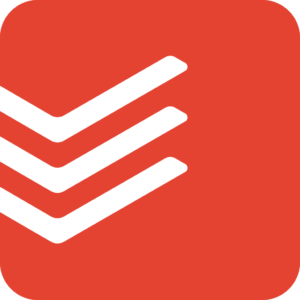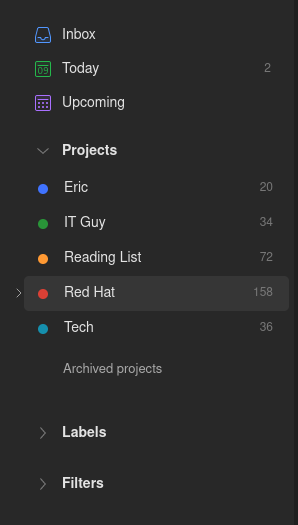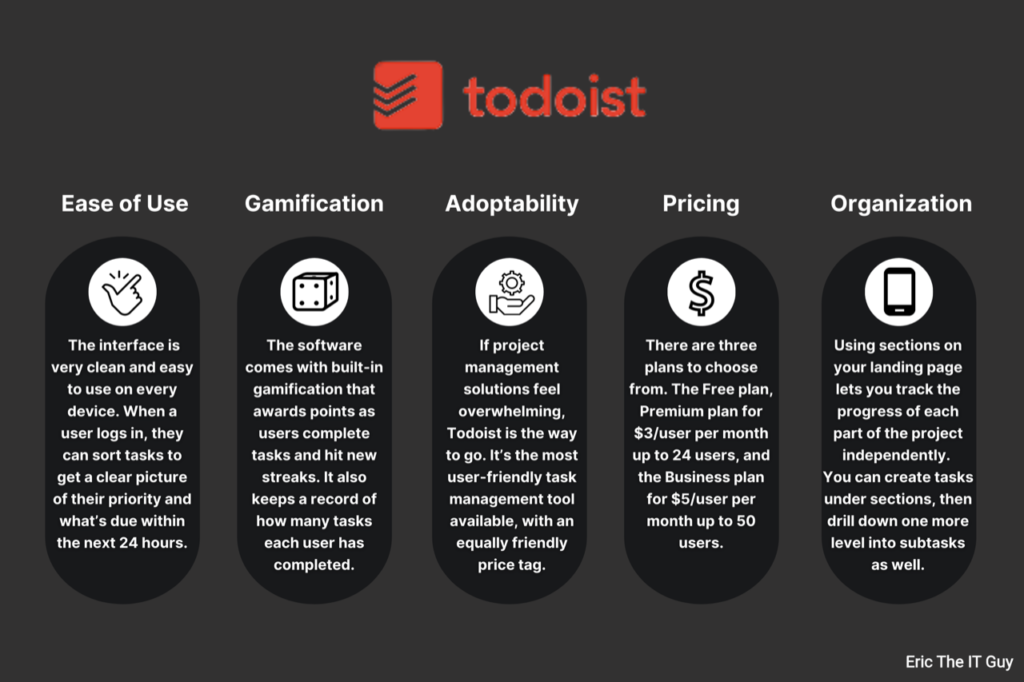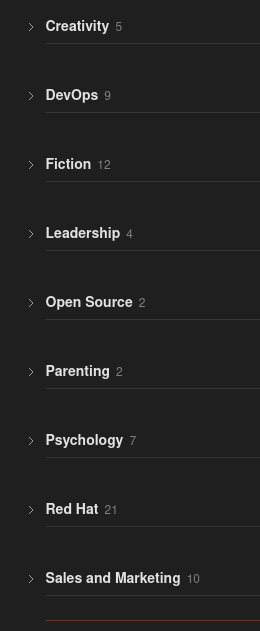Laying a Productive Foundation with Todoist
Where do you get your tasks from?
For me, it’s meetings, household chores, ongoing projects, random lists, IMs, Emails, forum posts, social media (yeah, believe it!), whew. For years, I tried different tools and methods for tracking my to-dos. I was pretty good at it… Most of the time. It seemed like now and then, though, I would hit a breaking point and all the plates I had been juggling would fall to the floor, and I’d have to start over again.

Enter Todoist, a product which boasts you can “regain clarity and calmness by getting all those tasks out of your head and onto your to-do list (no matter where you are or what device you use).” To say that Todoist is a to-do list or even a project management application would be a gross understatement. Over the past few years, I have managed to shift from an anxious task tracker to a productivity power user.
I work a demanding job in a challenging field, host a podcast, a live stream, have a wife, four wonderful kids, and a few hobbies. Add on top of that the need to sleep, work out, and get things done around our house. I don’t say that to impress you. We are all busy. It’s a challenge. What I plan to unleash into your minds is a series of tools and methods I use every day to get everything done. We’ll cover Todoist, email management, ways to focus on tasks (like me trying to write this blog post), and much, much more.
Grab your caffeine and hold on tight. Here we go!
Why use a to-do list?
“I don’t need a to-do list. I have that list in my head.”
Pleeeaaase. No you don’t! We live in a world of CRAZY connectivity! Everything is always on all the time. Tweets, news, sports, YouTube, podcasts…and that’s just a short list only from the digital world! Many of us have multiple devices within a few feet of our favorite chair that spend their time lighting up, dinging, buzzing, and ringing. Attention spans and deep work are at an all-time low.
“So what, I can multitask.”
Sorry, Charlie! That’s a common misconception. What you are really doing is context switching. The more alike tasks are, the easier it is to switch between the two in a short space of time and with little productivity penalty. However, if you go from following a lively instant messaging thread about plastic versus metal dice for tabletop games to working on a 3-year business plan, you aren’t giving either your full attention.
(Besides, we all know metal dice are better!)

Not only are you not giving either task your full attention, but you are also draining your limited energies for the day. You’re shifting gears between two very different tasks. That comes with a tax and lowers the quality of the finished product. We try to compensate for this by starting several tasks at once, then getting nothing done. Then, as inevitably happens to me, your youngest daughter bursts into your room and grabs your iPad off your desk! By the time you get her setup with her afternoon activity and get back to work, those 3 or 4 or 5 tasks have all fallen and shattered all over the floor. Now, you have to spend wasted time trying to pick up where you left off with each task!
“Eric, tell me there is a better way!”
Fear not, my young apprentices. There is a better way! To-do lists. Ta-da! That’s it. You’re welcome.
Oh, wait… You want to know which one? Okay, I got you. Sorry, I dropped the mic too soon.
How I found Todoist

I used to be stuck on Microsoft Outlook 2003. It had a decent task tracker… You could schedule tasks, set reminders, and eventually could even set tasks to repeat. It was okay. Eventually, I moved to Apple Tasks. It wasn’t as feature rich as it is today, but it got the job done and as a bonus synced to my mobile device. I’d also tried out Trello, but at the time couldn’t quite get a handle on how to use a task board (stay tuned, wink wink!). I also tried organizing projects into MS Project in college (yeah, I was that nerd), eventually projects moved into Evernote, and later Joplin.
Tasks and projects though are two different beasts entirely, but they are also connected! What I found I needed was a way to do both, preferably in the same tool. I needed to be able to do scheduling, track progress, and and and… My list of needs seemed to keep getting longer, how could any tool stand up to that!?
A friend of mine told me about this tool with a weird sounding name: Todoist. To-Do List without the L, clever, huh?
I had my doubts and, if I am being honest, was just looking for excuses not to use it. Strike 1 it’s not open source, strike 2 it’s a paid, cloud service. I told my friend this wasn’t looking good.

However, I begrudgingly created an account, and what I found surprised me. It had a simple-yet-beautiful user interface (UI), incredibly intuitive layout, and many of the features I felt I needed out of a task management tool. I can remember setting aside my work for the rest of the afternoon; I needed to give this tool a proper test drive. A few hours later, I was sold, literally, I signed up for the Pro subscription right then and there.
I could set reminders, recurring tasks, could set labels or organize by project. I had a Today view, that really helped, so I didn’t see EVERYTHING I needed to do, just wanted I wanted to get through that day. Not only that, but I had multiple levels of tasks (projects, sections, tasks, sub-tasks, and priorities).
It didn’t stop there, though! Since becoming a Todoist customer, they have introduced Kanban boards. Now, instead of sections just being a “subproject”, I could use Agile practices to track my work across their typical life cycle, say from idea to outline, draft, edit, and ready to publish. I could set up email aliases for each of my projects, that way, when someone emailed me a task to complete, I could hit forward, add in some metadata, and hit send. Within a couple of minutes, that task was also captured by my Todoist.
Todoist released Calendar integration. This made it much easier to judge how much work I had to get done. The average work day for me ranges from 30 minutes of meetings, up to 6 hours some days. (Yeah, tell me about it! That’s a lot of meetings.) The problem was, those meeting heavy days I may try to schedule my usual 8-10 tasks and get only a couple of them done. Well, I don’t want meetings to break my streak!! No way! So, I started creating tasks for meetings. Attend a meeting, mark off a task. It kept the streak alive, but also helped me plan better – more meetings, fewer tasks scheduled that day.
Getting Tasks Organized
Like many, many human beings, I sat there that first afternoon, staring at this blank canvas. Now what? I can create anything, schedule it any time, what do I do!?

After a brief battle with the void, I started out by creating projects for each major area of my life and color-coding them similar to my different calendar accounts I was already using: Personal (Blue), Work (Red), and General Tech (Green). For the most part, several years later, I still use roughly that same layout, though I have added a couple more top-level projects. For instance, I eventually added my content creation efforts like the Sudo Show and this blog to their own project.
The next easiest thing to do was to go into Apple Tasks and grab all the tasks I had stashed away in there. Take out the trash, submit a time sheet, etc. Short, recurring tasks were the first to come over. Put them in the right project, give them a due date, and move on to the next task.
The harder migration (at first) was how do I break up the projects on my plate and put them into Todoist? Fortunately, Todoist had me covered. Each project has sections. So, underneath my work project, I have a section for general tasks, for each of the engineering teams I support, meetings, and one for the live stream I host every other week.
I could then add my old projects as tasks inside each of these sections. From there, I learned how to break up a large task (like a podcast episode) into sub-tasks from researching the topic, writing the outline, following up with the guest, and eventually releasing the episode. This made it easy to break off bite-sized chunks of a task and get a little progress done each day! (Incredibly beneficial when you release a new episode every two weeks!)
While I was able to migrate a LOT of my ideas, tasks, and projects in the first couple of days, my approach to project planning, task execution, and idea tracking have evolved over the years. I’ll share more on that in a later post. Nowadays, I get between 10-15 tasks done a day. I have my paper notebook open every meeting to jot down thoughts or ideas, but I also have Todoist open somewhere (phone, tablet, web, or app) to make sure I grab any action items that I need to address. I constantly filter through my emails, ensuring nothing gets asked of me there. Anytime I get an IM with a request, into Todoist it goes!

Want to get started?
I would highly encourage you to get started with Todoist. It’s an amazing tool fueled by a company of folks who are passionate about helping you get more done. They have frequent releases that improve performance, squash bugs, and are still adding new features! They’re used by Apple, NASA, and folks from all different walks of life.
Go sign up for free today:
Disclaimer: This link is an affiliate link. If you purchase a Todoist subscription, I get a small percentage. That being said, I would be greatly appreciative of you using my link as anything I make from it is set aside to be reinvested into my content creation efforts (gear, hosting, etc.).

My Reading List
Before you go, I wanted to drop one more idea into your lap: From the screenshots, you’ll notice an orange project called Reading List. Todoist is a great place to drop books, blogs, and white papers!
I have a recurring task to check my RSS feed for any articles that have been published from my list of sources. I probably get about 40+ articles delivered to my RSS reader every day and read probably 25% of them from top to bottom. That can stack up if I don’t keep up with it.
I also do a TON of research between work, the podcast, and my own curiosity. White papers, data sheets, etc. are a hugely popular way to share content these days. Fortunately, Todoist has me covered there too. Todoist supports attachments! If I have a market research report to review, I’ll download it out of my email and drop it in a task and assign a date, that way I am certain I get to it.
Finally, there is my backlog of 60-some-odd books that has been accumulating over the years, from fiction to marketing to parenting. Todoist has even helped me knock that list down from 90 to 60 in the past year or so. When someone recommends me a book, I grab the link from the Kindle website and create a task for it. When I start a new book, I create a sub-task for every chapter. Then, I schedule one chapter a day each workday until that book is complete. The last chapter marks the book task complete, and I move on to the next book!
To keep things interesting, I usually pull a book from each category in my list, then start back at the top. I hope one day to only have a handful of books in this project, but considering my appetite for learning, I doubt it!
Wrap Up
Over the past couple of years, my productivity has skyrocketed! I feel confident I can manage a wide array of tasks on a wide range of projects and still keep my sanity.
Todoist now has a hand in: meeting tracking, household chores, my reading list, podcast and content planning, social media scheduling, and learning. I track tasks from keeping my daily food log to changing the water filter every 2 months, to reminding me to renew that one subscription each year that requires manually requesting a renewal. I haven’t even begun working with a lot of the integrations available in Todoist!
One thing I hope to implement soon is ensuring that recreation and disconnect time become scheduled, recurring tasks in my Todoist so that I can keep the momentum going. Whether that is a day to turn off all my notifications and rest or take the kids to the park. It’s easy to get caught up in all the demands of this world and forget what is truly important: love, joy, fun, family.
Take this journey with me. If you are struggling, learn from my mistakes and my victories. I highly recommend Todoist, but it’s not the only tool out there. Find one that works for you, and let it help you make a difference in your life and in the lives of those around you!

